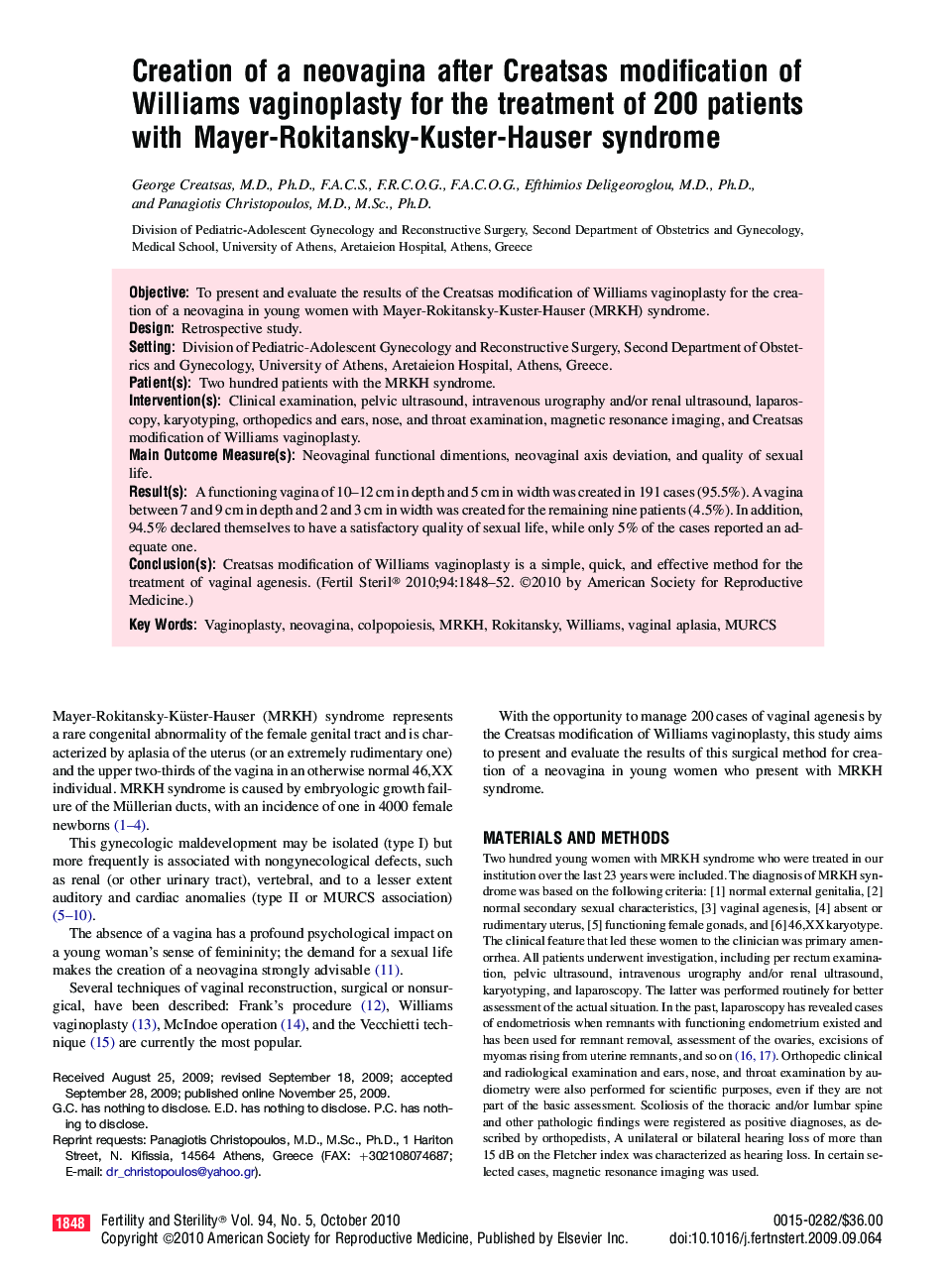| Article ID | Journal | Published Year | Pages | File Type |
|---|---|---|---|---|
| 3940509 | Fertility and Sterility | 2010 | 5 Pages |
ObjectiveTo present and evaluate the results of the Creatsas modification of Williams vaginoplasty for the creation of a neovagina in young women with Mayer-Rokitansky-Kuster-Hauser (MRKH) syndrome.DesignRetrospective study.SettingDivision of Pediatric-Adolescent Gynecology and Reconstructive Surgery, Second Department of Obstetrics and Gynecology, University of Athens, Aretaieion Hospital, Athens, Greece.Patient(s)Two hundred patients with the MRKH syndrome.Intervention(s)Clinical examination, pelvic ultrasound, intravenous urography and/or renal ultrasound, laparoscopy, karyotyping, orthopedics and ears, nose, and throat examination, magnetic resonance imaging, and Creatsas modification of Williams vaginoplasty.Main Outcome Measure(s)Neovaginal functional dimentions, neovaginal axis deviation, and quality of sexual life.Result(s)A functioning vagina of 10–12 cm in depth and 5 cm in width was created in 191 cases (95.5%). A vagina between 7 and 9 cm in depth and 2 and 3 cm in width was created for the remaining nine patients (4.5%). In addition, 94.5% declared themselves to have a satisfactory quality of sexual life, while only 5% of the cases reported an adequate one.Conclusion(s)Creatsas modification of Williams vaginoplasty is a simple, quick, and effective method for the treatment of vaginal agenesis.
